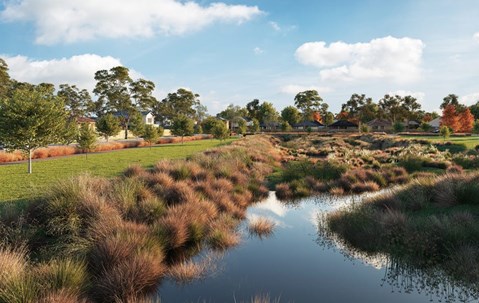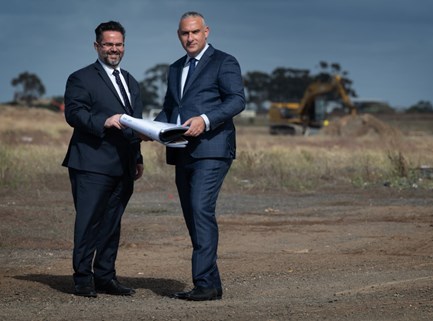News & Tips

How Long Will Regional Property Surge Last As Recovery Continues?
In an economy where an increasing number of Australians are expected to be receiving the COVID-19 vaccine, the real estate markets that have been supercharged by the post-pandemic recovery are worth watching closely.
Greater immunity might help prevent scenarios like the snap lockdown in Brisbane - a demonstration of the hammer blow the virus can deal to our health, economy and, of course, lifestyle.
Indeed, lifestyle has been a key driver of various markets since COVID-19 emerged underpinning the booming popularity of regional real estate, especially since the first lockdowns commenced in the last weeks of March 2020.
The pandemic led to many Australians rethinking where they want to live. This has been driven by a range of factors including a broader reconsideration of what is important (such as work-life balance) and technology (especially now that working remotely is the new norm for many).
An escape to a coastal hamlet or country town became genuine considerations for buyers unlocked from the constraint of being in a capital city for their work.
Interest in regional real estate began to surge.
But will its popularity continue in a vaccinated Australia?
At Oliver Hume, multiple data points are tracked to help us understand the residential property industry.
It’s about analysing what the market has done in the past, what is happening now, and where is the market headed.
Here are some factors to think critically about when it comes to the popularity of real estate in regional areas.
Regional Real Estate Was Going Strong Pre-Pandemic
Sales in regional markets were increasingly healthy before terms like ‘flatten the curve’ and ‘herd immunity became part of our vernacular.
Affordability, the desire for a change of pace and a lifestyle change, improving employment, recreation, social, educational and other opportunities in the regions were key drivers of the regional property market.
We consider that the factors at play that were driving the strong performance of regional real estate pre-pandemic remain and should continue to fuel healthy sales in the future, buoyed by a shift in consumer and buyer attitudes due to COVID-19.
Even when all 25 million of us are vaccinated, many buyers will continue to seek the smell of eucalypts over car fumes and will continue to hunt for rolling hills over towering buildings and they will continue to search for open spaces over close quarters.
One key factor that drove regional demand pre-COVID-19 is likely to remain key - if not become more important – in a post-COVID-19 world.
This factor is affordability and it helped underpin an increasingly healthy level of sales in regional markets (compared to metropolitan markets).
Many first home buyers, especially, were drawn to regional areas because of significantly better affordability. These areas will remain at the top of property hit lists for first home buyers and many other purchasers - pandemic or no pandemic.
Pandemic Accelerates Demand for Regional Real Estate
“If we can work from anywhere while we wait out the pandemic, where would we rather be?”
It’s a question COVID-19 prompted many buyers to ask themselves. And locations that struck an attractive balance between being far enough away while remaining near enough to major cities proved popular. Lifestyle, affordability and incentives like the first homeowner grant positioned regional areas to thrive.
Oliver Hume’s Quarterly Monthly Index showed regional cities like Geelong and Warragul were among the strongest performers in the last months of 2020.
It’s clear that the pandemic only accelerated an increase in demand for what regional areas have to offer.
Locations with transport infrastructure to connect people to employment hubs were especially well placed to benefit from a building wave of new buyers.
Metropolitan Markets Will Continue To Be Popular
Australia’s two largest cities have a combined population of more than 10 million people.
Between them, Sydney and Melbourne account for more than 40% of the nation’s population.
There was speculation that greater interest in regional areas and also less populated states and territories may slow population growth in Sydney and Melbourne in the wake of the pandemic.
While the virus has spurred many Australians to escape to the country or the coast, that doesn’t mean the real estate markets in metropolitan areas are performing poorly.
In fact, the price growth for metropolitan Melbourne houses over the year to March 2021 was up a healthy 8.8% to reach an average of $1,004,500.

Julian Coppini CEO Oliver Hume Real Estate Group - Project Marketing & George Bougias National Head of Research Oliver Hume Real Estate Group
This is the first time the metropolitan Melbourne median house price had surpassed $1,000,000.
That’s interesting to note because when lockdowns strike everything buyers love about metropolitan areas shut down.
Cafes, restaurants, bars, clubs, gyms and workplaces are put into limbo.
Still, a mass exodus from the cities has certainly not happened and there are no signs of utter decentralisation in the future.
So don’t write off cities is the big takeaway when you look at the popularity of regional real estate.
Future Outlook
Eyes were opened to the wonders of regional residential properties and they don’t seem like closing any time soon.
Strong sales results in early 2021 and record low-interest rates point towards a healthy regional real estate market over the short to medium term.
Currently, demand remains high and there are many housing projects in the pipeline in regional areas ensuring supply will be there to meet it.
Even when our population is mostly vaccinated and the virus has been brought under control, to the extent that any virus can be controlled, the factors that fuelled increased demand for regional real estate will persist – lifestyle and affordability.
We will continue to monitor these markets to gauge whether the surge of 2020 continues or whether it’s pulled back a notch.

